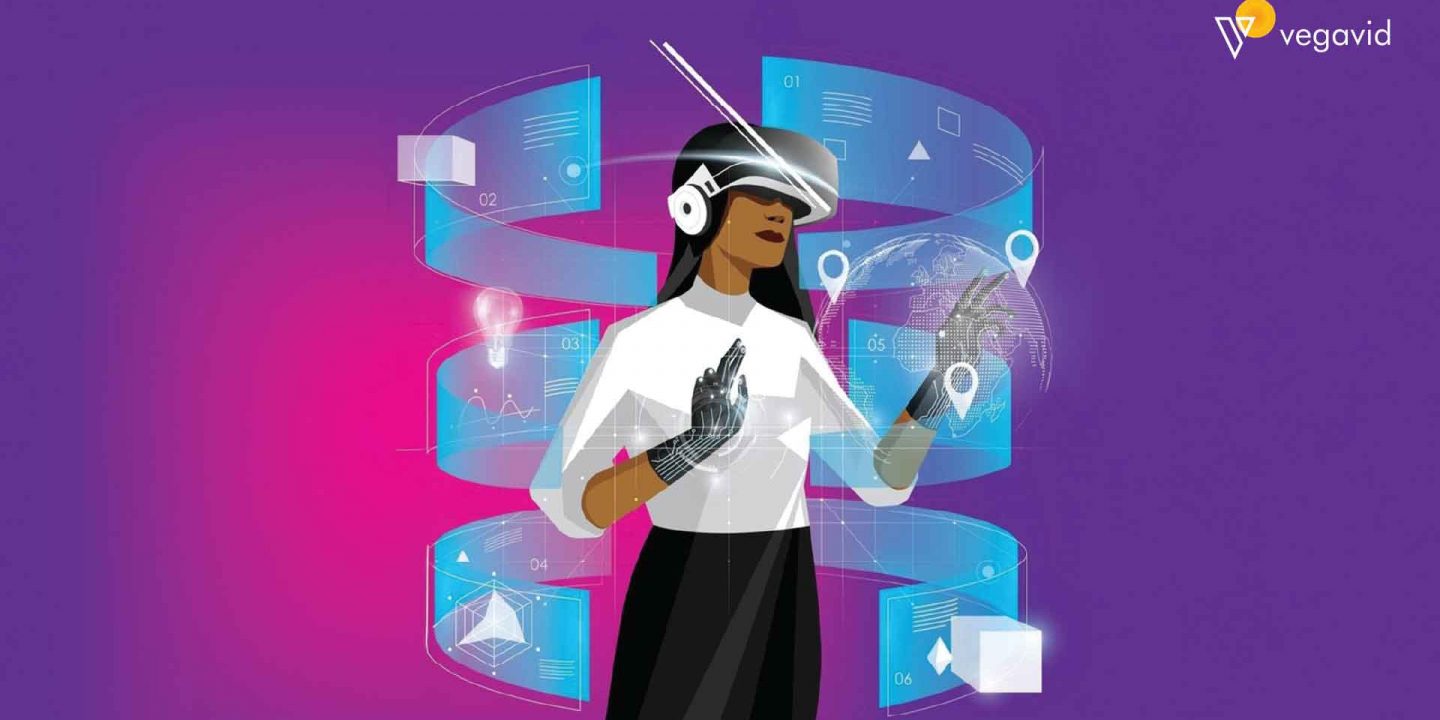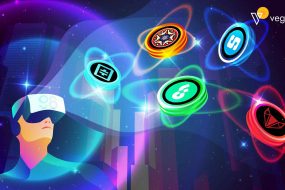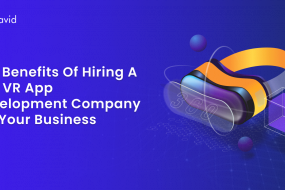
Virtual and augmented reality are remodeling the way we communicate, paint, and play as immersive technology emerges as greater accessible. Many see this as the early degrees of “Metaverse” – a completely realized virtual international wherein virtual and bodily realities merge. Building the Metaverse will require new tools and systems to create enticing, inclusive studies at scale. This weblog discusses a few critical development tools that will power the advent of immersive Metaverse applications.
The growing popularity of immersive experiences
Immersive experiences are gaining a reputation as people are searching for new methods to be entertained and engage with facts. Virtual reality, augmented fact, and sights like escape rooms attraction to a desire for sensory-wealthy reviews with multimedia effects and freedom to move around.
Virtual reality, to be had via consumer headsets, immerses people in a very artificial international. Users put on a headset that covers their eyes and ears, tricking the brain into wondering it’s miles in a one-of-a-kind location. This creates an unequaled stage of immersion that makes people surely feel like they’re within the digital global.
Augmented reality enhances the real global via covering digital content. Devices like smartphones and AI glasses motive digital items to seem included with the actual surroundings. This barely much less immersive revel appeals to its overlap of virtual information with physical spaces.
Escape rooms offer a live, bodily immersive enjoyment via difficult humans to remedy clues and puzzles to “escape” a themed room within a time restriction. Multiple senses are engaged via complicated decorations, sound results, and props applicable to the room’s subject matter. Groups should cooperate and use innovative thinking to develop.
The choice to detach from recurring and virtual screens drives interest in these reports. People price the usage of their complete bodies to bodily interact with environments and issues, engaging more than one sense immediately. Immersive experiences provide respite from online distractions via being centered, tactile, and out of the ordinary.
Essential Development Tools for the Metaverse
Whether you are a pro developer or simply dipping your feet into this interesting new international, knowledge of the essential tools is crucial to navigating and shaping this evolving landscape. Some of these tools are-
3-D Modeling and Rendering Software
Three-D modeling and rendering software equipment will play an important function in developing content for the Metaverse. Such equipment permits creators to design awesome virtual items, environments, and characters that can be skilled and interacted with in virtual worlds.
3-D modeling software allows artists to construct 3-d gadgets by means of shaping geometric forms and applying textures. Models can be built from scratch or modified from existing templates. Artists use equipment like meshes, curves, and shapes to polygonally assemble three-D forms. Textures, materials, and lighting are then implemented to give objects realistic surfaces and appearances.
Rendering software presentations 3D models realistically by way of calculating how virtual surfaces react to things like lighting and shadows. It processes the visual houses of 3D items, making use of standards like shading, reflections, and transparency to provide photorealistic 2D snapshots or animated sequences.
An excessive-fidelity Metaverse will require sizable volumes of photorealistic 3-d content for virtual environments, tools, transportation, and anything else that exists in virtual worlds. 3D modeling software will permit creators to design buildings, fixtures, automobiles, and different items that populate digital areas.
Rendering software will transform those 3-D designs into the photorealistic textures, reflections, and different visual results wanted for them to seem actual to users within the Metaverse. Together, three-D modeling and rendering equipment will empower creators to construct virtual scenes and objects required to preserve immersive extended realities.
Virtual Reality (VR) and Augmented Reality (AR) SDKs
VR and AR SDKs (software development kits) might be crucial equipment for creating Metaverse programs and studies. SDKs provide libraries, sample code, and equipment to help developers build VR and AR reviews for specific hardware platforms.
VR SDKs offer the capability for developing completely immersive virtual international applications. They include APIs (utility programming interfaces) that allow builders to address common obligations like integrating 3D models, handling controller input, and rendering stereoscopic pictures. VR SDKs normally guide foremost VR headsets and provide talents for 6DOF (six tiers-of-freedom) tracking, 3-d audio rendering, and VR locomotion.
AR SDKs equip developers with the equipment to create augmented truth apps that overlay virtual content material on a live view of the bodily international. They offer entry to device sensors and cameras to locate the real environment. AR SDKs handle obligations like aircraft detection, item recognition, movement tracking, and scene expertise. They assist structures like cellular devices, smart glasses, and head-established displays.
Both VR and AR SDKs will play an important position in permitting 1/3-birthday celebration builders to create Metaverse apps, gear, and stories that can be accessed throughout hardware and software structures. SDKs will offer a not unusual set of competencies for integrating 3-d models, animations, physics outcomes, and greater into Metaverse applications.
As the Metaverse expands, new VR and AR SDKs focusing mainly on the Metaverse may emerge. These should offer better-degree talents tailored to Metaverse development, along with tools for developing digital avatars, digital environments at scale, synchronized experiences across customers, and interactions with digital gadgets and results.
Game Engines for Interactive Content
Game engines will play an important element in powering interactive content inside the Metaverse. Game engines are software program frameworks designed for growing video games. They offer equipment and functionality for developers to without difficulty create 2D and 3D interactive environments.
Game engines typically encompass gear for managing physics simulations, synthetic intelligence, animation, 3-D modeling, rendering, lighting fixtures, sound, and special effects. They can streamline the technique of creating complicated virtual worlds and interactions by means of offering pre-built resources that builders can personalize.
While initially designed for video games, cutting-edge game engines have increased to electricity an extensive range of interactive simulations and digital reviews beyond games. They are used for architecture walkthroughs, safety training, records visualization, product layout evaluations, virtual tours, and extra.
Blockchain and Cryptocurrency Integration
Blockchain generation and cryptocurrencies will play an important position in powering the Metaverse economy. Blockchains can be incorporated into Metaverse programs and systems to enable possession of virtual belongings, steady decentralized garage, and facilitate transactions within digital economies.
Most importantly, blockchains may be used to set up ownership of virtual goods and content material within the Metaverse. By recording transactions on a distributed ledger, blockchains can uniquely discover music ownership of virtual assets like lands, buildings, cars, apparel, and different gadgets. This offers those virtual objects a cost by making them scarce and capable of being traded.
Blockchains can also shop and confirm essential statistics related to digital property and digital identities. By supplying a tamper-evidence report, blockchains can shop details like object descriptions, attributes, licenses, and conditions that apply to use in the Metaverse. They also can anchor digital identities to actual credentials to soundly establish users’ digital identities.
Cryptocurrencies constructed on blockchains will facilitate the change of cost within Metaverse economies. Just like in the real international, users will want ways to shop for, sell and exchange digital items. Cryptocurrencies can serve as the native currency for transactions within Metaverse systems, allowing users to pay for virtual objects, offerings, and reviews.
Blockchains and cryptocurrencies will be vital equipment to electricity key elements of the Metaverse’s digital economy like possession of assets, verification of statistics, and trade of value. By recording transactions and homes of virtual objects on decentralized ledgers, blockchains can convey shortage, traceability, and value to the Metaverse in a stable and verifiable way. Cryptocurrencies will offer the virtual cash wanted for an economic system where most things of cost exist only digitally.
Social Interaction and Communication Tools
Social interplay and communication equipment can be vital for bringing human beings together inside the Metaverse. As a shared digital space, the Metaverse will want ways for users to engage, collaborate and build communities.
Voice and video chat apps will permit Metaverse customers to talk and engage in actual time. These may be incorporated into digital environments to offer users voice and visual representation via avatars. Chat functions will also be vital for messaging and discussing activities outdoors of actual-time interactions.
Social networking platforms can help customers connect based on shared interests, form companies, and be part of groups within the Metaverse. Just like inside the real globe, networks will make it feasible to find and make new pals in addition to living in contact with present ones.
Collaboration gear like real-time record editors, project control software programs, and workflow automation can enable joined paintings among Metaverse customers. These permit simultaneous enhancing, task assignment, planning, and tracking development to facilitate teamwork throughout virtual organizations.
Moderation and governance gear may be crucial to maintain civility, manipulate content and mitigate dangerous behaviors inside Metaverse social areas. Moderators can use those tools to put into effect community pointers, flag beside-the-point content material, and take actions like issuing warnings, muting customers, or banning repeat offenders.
In summary, an extensive variety of social and communication gear will want to be embedded within the Metaverse to assist how human beings connect, engage and collaborate in shared digital spaces. This gear will shape how users develop relationships, shape groups, and get work accomplished collectively beyond the limitations of bodily locations.
Conclusion
Many varieties of tools could be needed to develop the fantastic, interactive reports that signify the Metaverse. From 3-D modeling and rendering software programs to SDKs, game engines, blockchain integrations, and social equipment, the proper improvement strategies and platforms will determine how seamless, beneficial, and fun the Metaverse ultimately will become. By following great practices around open standards, interoperability, ethics, and more, builders can help convey to lifestyles a Metaverse that enhances humanity at the same time as minimizing unintended effects. The evolution of the Metaverse is just starting, and its development would require collaborative entry from technologists, policymakers, groups, and the public to create virtual spaces that gain society as a whole.











